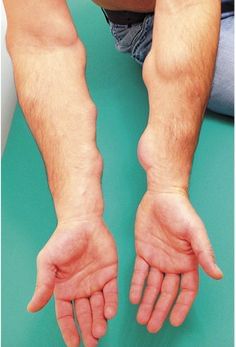Treat Lipoma With Homeopathy!
The lipoma is the painless lump which can appear on any part of the body. Prevalence is 2% per 100 people. It is a great matter of cosmetic problem if it appears on the face and hands. Usually, the treatment is surgical excision. There are chances of recurrences after the surgical intervention. Thus with Homoeopathy, we can treat this condition effectively and the chances of recurrences also are prevented.
Objectives :
- To define Lipoma along with its various types
- To identify the Homoeopathic management of Lipoma with the help of Repertory.
Lipoma -
Lipoma is the benign tumor arising from the adipocytes. It is characteristically soft in consistency, movable and generally painless. Except in the brain, they can occur anywhere in the body thus known as a universal tumor. It is mobile and edges will be slipping between the palpating fingers. Skin is usually free. Pain is uncommon unless it is a neural element or it compresses the nerve or the adjacent structures.
It is composed of mature adipocytes and uniform nuclei. Based on the presence of the capsule it can be Localised or Diffuse. Diffuse Lipomas are common in palm, sole, head and neck. Based on the site of appearance it can be Superficial or Deep. Superficial is common in the subcutaneous plane and can appear in back, neck, proximal extremities and abdomen. Deep Lipomas are commonly intramuscular but it can be intermuscular or both intra and intermuscular. They tend to attain a large size.
Single Lipomas are the common ones to be seen in the subcutaneous plane. Multiple Lipomas are 15% commonly seen in males in sites like back, shoulder, upper arm and can be associated with many syndromes1.
Types -
Based on the component -
- Hibernoma- benign tumor arising from brown fat
- Fibrolipoma- lipoma with fibrous component
- Naevolipoma- lipoma with telangiectasis
- Neurolipoma- lipoma with nerve tissue
- Angiolipoma- lipoma with vascular tissue
- Myolipoma- lipoma with smooth muscle
- Chondroid lipoma- lipoma with chondroid (tissue resembling cartilage)
- Spindle cell lipoma- lipoma with spindle cell
- Pleomorphic lipoma- a variant of spindle cell lipoma
- Lipoblastoma- lipoma of immature fat occurring in infant boys particularly in the subcutaneous tissue of an extremity
- Lipoma arborescens- lipoma occurring in a joint or tendon sheath or with diffuse villonodular proliferation in the synovium
Based on the site -
- Subcutaneous- lipoma under the skin
- Subfacial- lipoma situated below the facia
- Intramuscular- lipoma within the muscle
- Intermuscular- lipoma between the muscle
- Parosteal- lipoma immediately adjacent to the periosteum of a bone
- Subserosal- lipoma under the serous membrane
- Submucosal- lipoma below the mucosal layer
- Extradural- lipoma situated outside the dura matter
- Intraarticular- lipoma within the joint
- Subsynovial- lipoma below the synovium
- Subperiosteal- lipoma occurring beneath the periosteum
- Interoseous- lipoma situated between the bones
- Intraglandular- lipoma within the gland
Causes -
Doctors do not fully understand what are the causes of lipoma.
Some people inherit a faulty gene from their parents that can cause one or more lipomas. This is rare and is known as familial multiple lipomatosis.
Lipomas can occur more frequently in people with specific medical conditions, such as:
- Gardner's syndrome
- Cowden syndrome
- Madelung's disease
- adiposis dolorosa
Researchers have also suggested that some lipomas may result from an injury that involves a substantial impact on the area.
Symptoms -
A person with a lipoma will typically feel a soft, oval-shaped lump just beneath the skin. Lipomas are usually painless unless they affect joints, organs, nerves, or blood vessels. In most cases, they do not cause other symptoms.
A person with a lipoma that occurs deeper under the skin may not be able to see or feel it. However, a deep lipoma may place pressure on internal organs or nerves and cause associated symptoms. For example, a person with a lipoma on or near the bowels may experience nausea, vomiting, and constipation.
Health implications -
Lipomas are benign masses of fat cells. However, experts disagree about whether or not lipomas have the potential to become cancerous. A cancerous mass of fat cells is known as a liposarcoma.
Based on research, many experts have concluded that liposarcomas do not develop from lipomas but are, in fact, a different type of tumor. They believe that doctors sometimes mistake liposarcomas for lipomas.
Conversely, other experts think that lipomas may contain both cancerous and pre-cancerous cells, but that it is extremely rare for a lipoma to become cancerous.
Risk factors -
It is fairly common for a person to develop a lipoma. Experts estimate that around 1 percent of people have a lipoma.
People who have a family relative with one or more lipomas have a higher risk of developing this condition. Lipomas are also more likely to occur in people aged between 40 and 60 years old.
Other risk factors for developing a lipoma may include:
- obesity
- high cholesterol
- diabetes
- liver disease
- glucose intolerance
When to see a doctor?
People should always tell their doctor if they notice changes in a lipoma or if more lumps appear. These changes might involve the lipoma:
- increasing in size or suddenly growing very quickly
- being painful
- becoming red or hot
- turning into a hard or immovable lump
- causing visible changes in the overlying skin
Diagnosis -
A CT scan can help a doctor to diagnose a lipoma.
Doctors can usually diagnose a lipoma with a simple physical examination.
They may start by inspecting and feeling the lump. If the lipoma is large or painful, the doctor may order tests to check if it is cancerous.
They may use the following tests:
- biopsy, where the doctor will remove a small sample of cells from the lump and examine the tissue under a microscope to look for signs of cancer
- ultrasound scan
- MRI scan
- CT scan
When is removal necessary?
Lipomas are usually harmless, so most people do not need to have surgery to remove them. People may want to remove a lipoma that:
- is cancerous
- is large or growing quickly
- causes bothersome symptoms, such as pain and discomfort
- interferes with normal body functions
- causes distress for cosmetic reasons
- the doctor is unable to confirm is a lipoma rather than another type of tumor



+1.svg)
